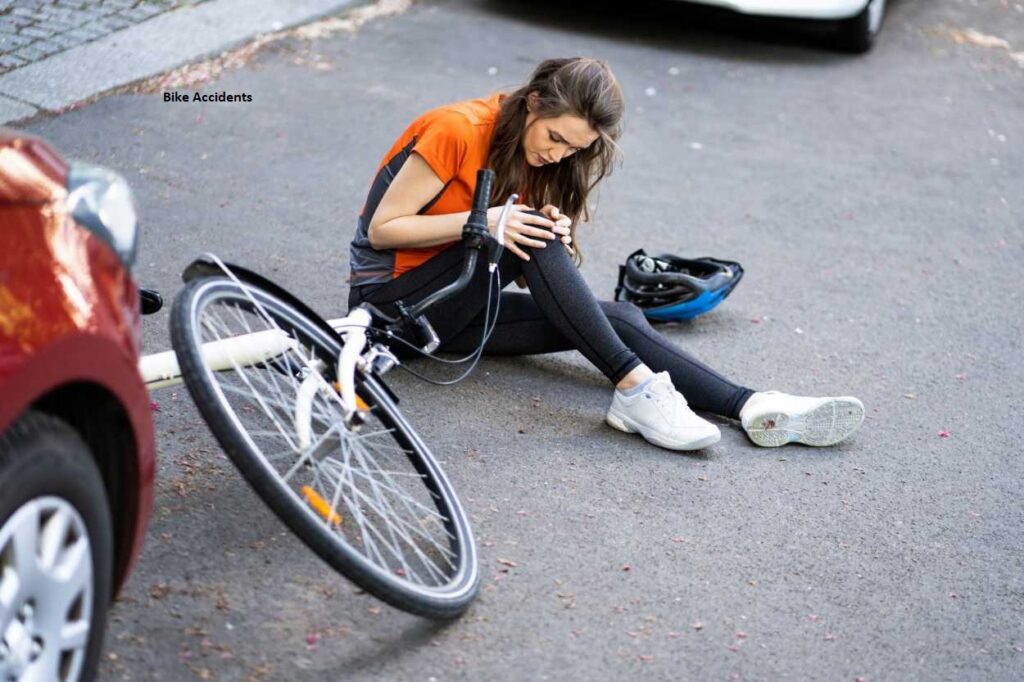Introduction
Bike use for leisure and commuting has increased as a result of global adoption of sustainable transportation options. Riding a bike gives you a sense of freedom and adventure in addition to being an environmentally responsible and healthful mode of transportation. However, as cycling has become more popular, there has also been a rise in bike accidents. This emphasizes the need for Bike Accidentsa thorough understanding of the factors that lead to these incidents, preventative measures, and coping mechanisms for those who are impacted.
Understanding the Causes
Numerous things, from the environment to human behavior and road infrastructure, can lead to bike accidents. It is imperative to acknowledge and comprehend these causes in order to formulate efficacious strategies for prevention.
Distracted Riding and Driving
Distracted driving can be a contributing factor in accidents for both drivers and cyclists. While using a phone while riding or listening to loud music are two of the most common distractions for drivers, cyclists may also partake in these activities.
Lack of Visibility
One of the main causes of bicycle accidents is poor visibility, particularly in low light. Collisions can occur as a result of poor road lighting, cyclists lacking reflective clothing, and poor weather-related visibility.
Unsafe Road Conditions
Cyclists are at risk from potholes, uneven surfaces, and poorly maintained roads. Accident risk can be raised by inadequate signage and the absence of bike lanes, particularly in places with high traffic volume.
Intersection Conflicts
Bicycle accidents frequently occur at intersections. Cyclists and drivers may collide as a result of problems like unclear rights of way, disobedience of traffic signals, and inadequate intersection design.
Dooring Incidents
When a driver of a parked car opens the door without looking for oncoming bicycles, it can cause “dooring” accidents, which puts cyclists on the road with them.
Prevention Strategies
Bicyclists, drivers, city planners, and legislators must all work together to address the underlying causes of bicycle accidents. By putting into practice efficient preventative measures, bike accidents can be considerably decreased, making riding environments safer for cyclists.
Education and Awareness
It is essential to raise awareness of bike safety among drivers and cyclists. Campaigns for education can stress the value of following traffic laws, putting down electronics, and being aware of one’s own and other people’s rights and responsibilities.
Infrastructure Improvements
Bicyclists can experience a safer environment by investing in bike-friendly infrastructure, such as well-kept bike lanes, obvious signage, and secure intersections. By separating bike lanes from car traffic, collision risk is decreased.
Visibility Enhancements
Bikers’ visibility can be greatly increased by promoting the use of high-visibility clothing, bike lights, and reflectors, especially when riding at dusk, dawn, and night. Campaigns to raise public awareness can support these steps to increase visibility.
Legal Reforms
It is crucial to enact and uphold laws that safeguard cyclists. This entails severe consequences for driving while intoxicated, guidelines for safe passing distances, and rules that support the safety of cyclists at intersections.
Community Engagement
Community events, workshops, and forums can promote dialogue and understanding between different road users; these can help create a safer road environment by encouraging a sense of community and shared responsibility among cyclists, motorists, and pedestrians.
Coping with Bike Accidents
Despite proactive measures, accidents can still occur, and it is crucial to understand how to cope with the aftermath. Whether you are a cyclist involved in an accident or a witness to such an incident, knowing the appropriate steps to take is essential.
Seek Medical Attention
In the event of a bike accident, the first priority is the health and well-being of those involved. Seek medical attention promptly, even if injuries appear minor. Some injuries may not manifest immediately, and a medical evaluation ensures a comprehensive assessment.
Document the Scene
If possible, document the accident scene by taking photographs of the involved vehicles, the surrounding area, and any relevant road signs or signals. This documentation can be valuable for insurance claims and legal proceedings.
Exchange Information
Exchange contact and insurance information with the other parties involved in the accident. Obtain contact details from witnesses as well. This information is crucial for insurance claims and any potential legal proceedings.
Report the Incident
In many jurisdictions, it is necessary to report bike accidents to the local authorities. Be sure to file a police report, providing a detailed account of the incident. This report serves as an official record and can be useful in legal matters.
Contact Your Insurance Company
Notify your insurance company of the accident as soon as possible. Provide them with the necessary information and follow their guidance on the claims process. Insurance coverage can help with medical expenses and property damage.
Legal Assistance
If the accident involves significant injuries or disputes regarding fault, seeking legal advice may be necessary. Consult with a personal injury attorney experienced in bike accidents to understand your rights and options.
Emotional Support
Bike accidents can be traumatic experiences, and emotional well-being is just as important as physical health. Seek support from friends, family, or professional counselors to help process the emotional impact of the incident.
Conclusion
Bicycle accidents require a thorough understanding of causes, prevention, and coping mechanisms as riding continues to gain popularity as a form of transportation and recreation. Through education, infrastructure upgrades, and legislative changes, society can address the underlying causes of accidents and lessen the frequency of these incidents while also making bicycle environments safer.
It is important to know what to do in the unfortunate event of a bike accident. This includes documenting the scene, contacting the relevant parties, and seeking medical attention. We can endeavor to build roads that meet the various needs of all users by encouraging a culture of safety and a sense of shared responsibility. This will guarantee that bicycling continues to be a fun and safe form of transportation for everyone.


